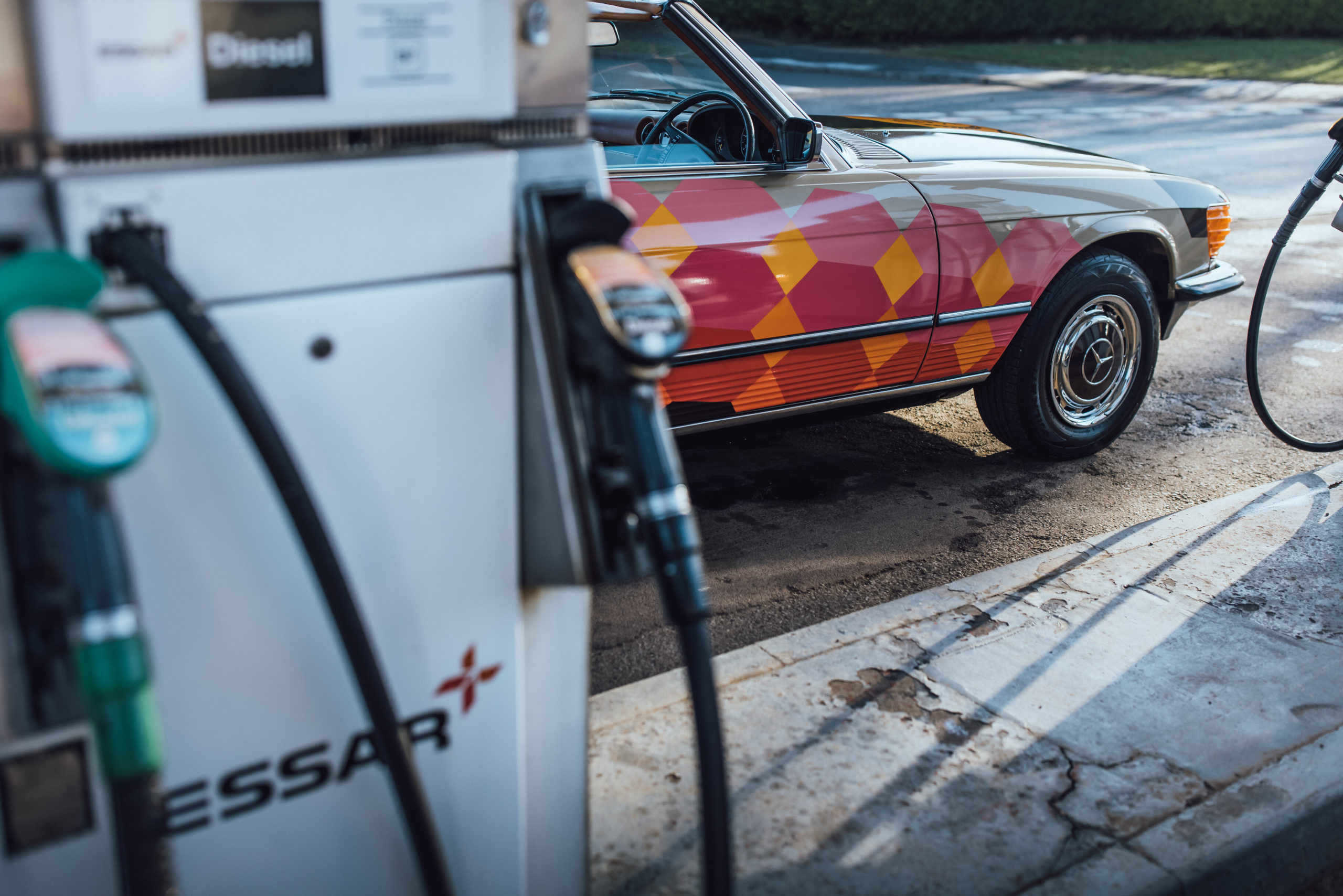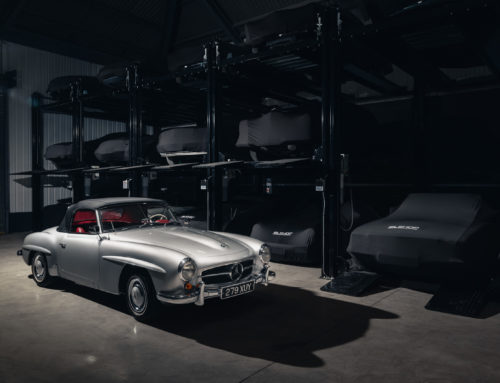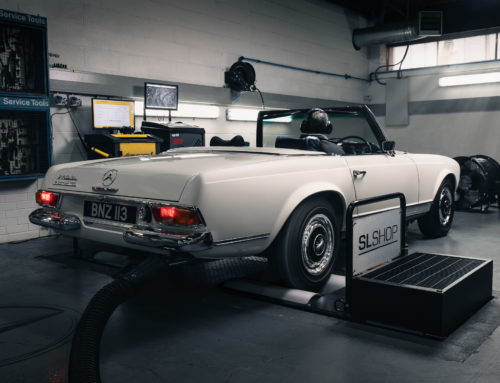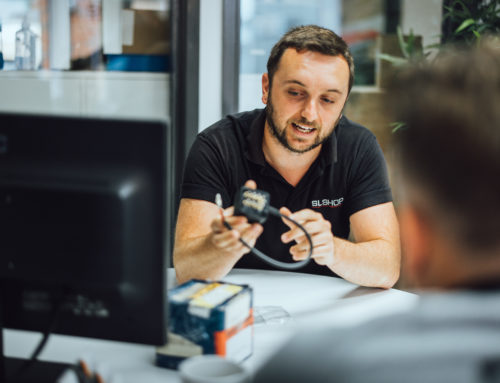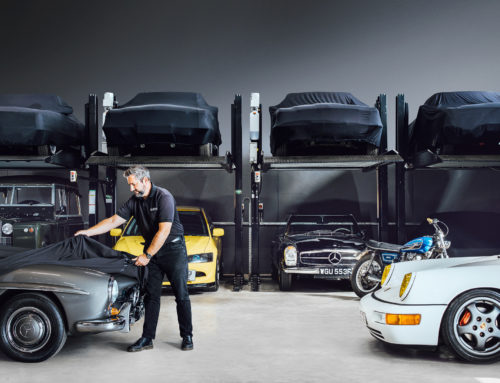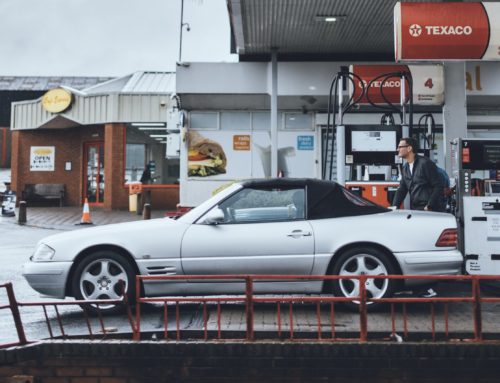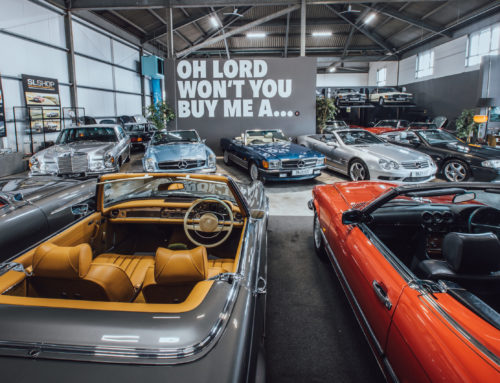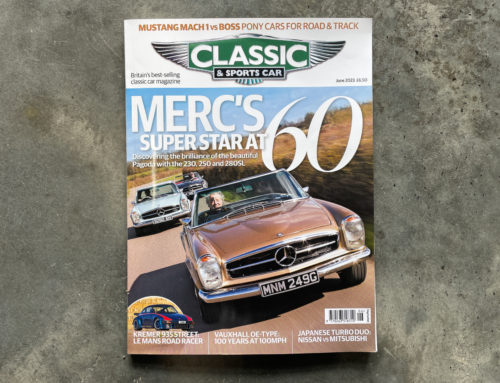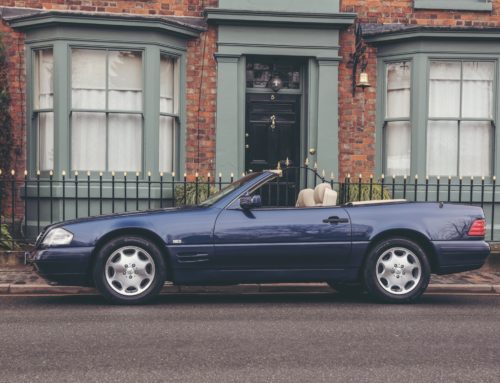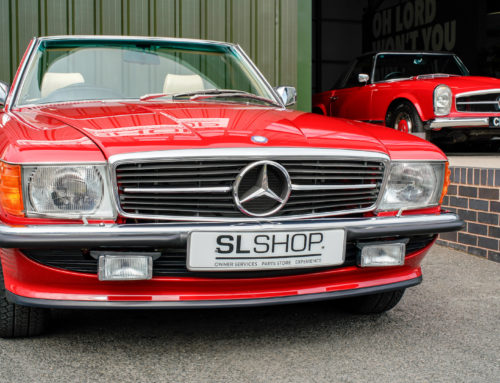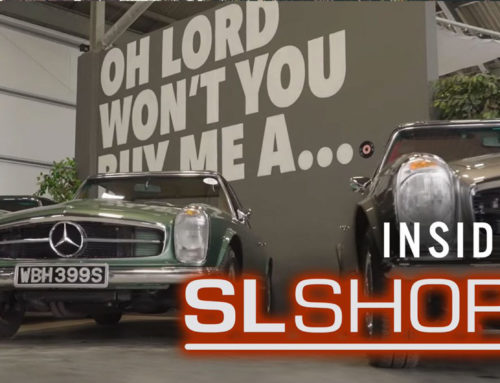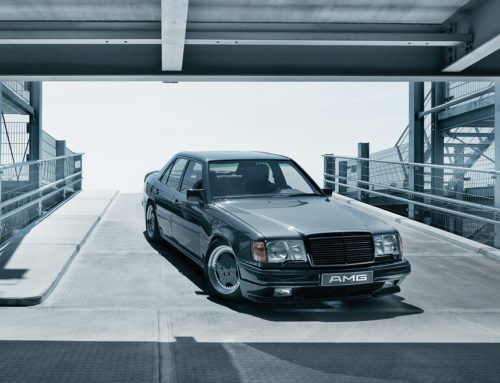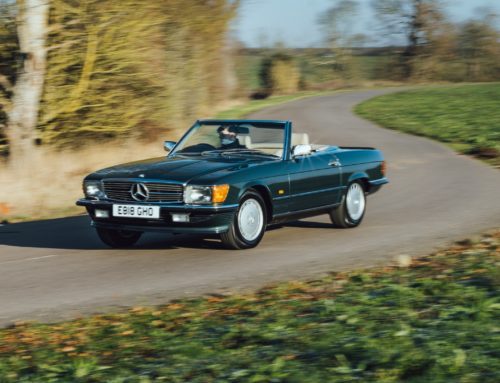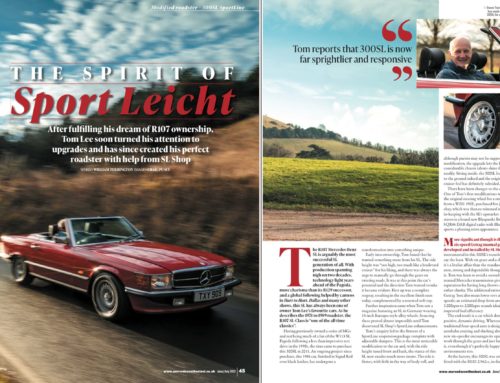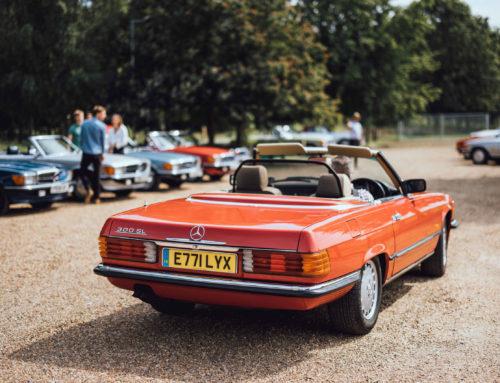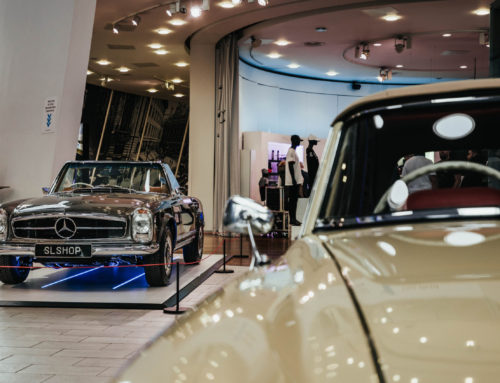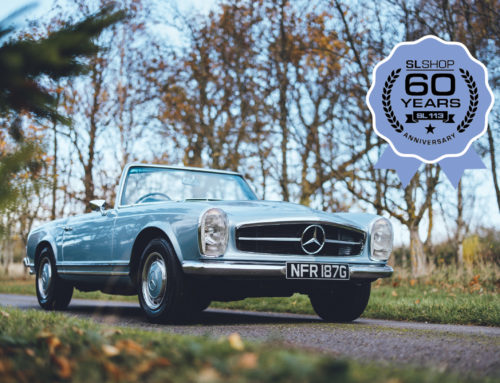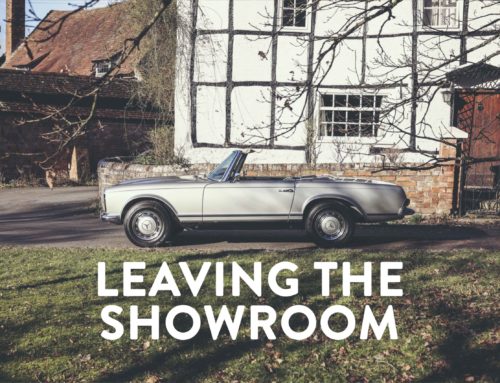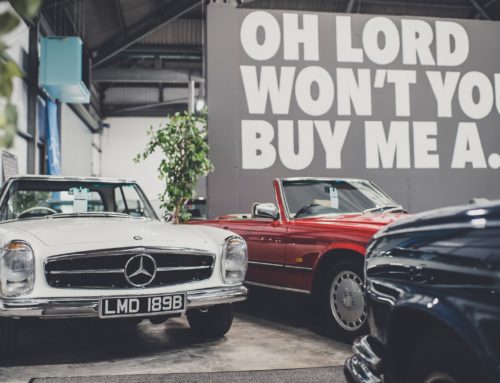A new grade of fuel, known as E10 will be introduced to UK motorists in September 2021. E10 fuel in old cars could have significant effects on performance and condition, eventually contributing to more excessive wear and tear.
Experts are concerned that the introduction of E10 could be more detrimental to the motor vehicle, than the transition from leaded to unleaded Petrol at the start of the millennium. The introduction of E10 is just one of the Government’s forthcoming steps to achieving Net Zero, with this more climate-conscious Petrol variant intending to help drivers more easily transition to electric vehicles.
Initial research has suggested that pre-2011 cars will be most affected. But the RAC has specifically warned about the consequences of putting E10 in older pre-2002 cars, instructing people to avoid E10 fuel and outlining that over 600,000 drivers will be affected by the introduction of this fuel. The impact to these customers could extend beyond expensive maintenance to an inevitable increase in the price of traditional unleaded fuel. The Society of Motor Manufacturers and Traders has also estimated that 8% of petrol-engine vehicles in the UK are not compatible with E10.
What is E10 fuel?
The unleaded fuel we use at present contains 5% bioethanol and hence the name E5 printed on the fuelling guns you find at forecourts. This label will be changed to E10 from September, reflecting the increase in bio-ethanol presence to 10%. On one side, the increased presence of bioethanol makes the fuel marginally more environmentally friendly, but on the other hand, it is not as compatible with older vehicles.
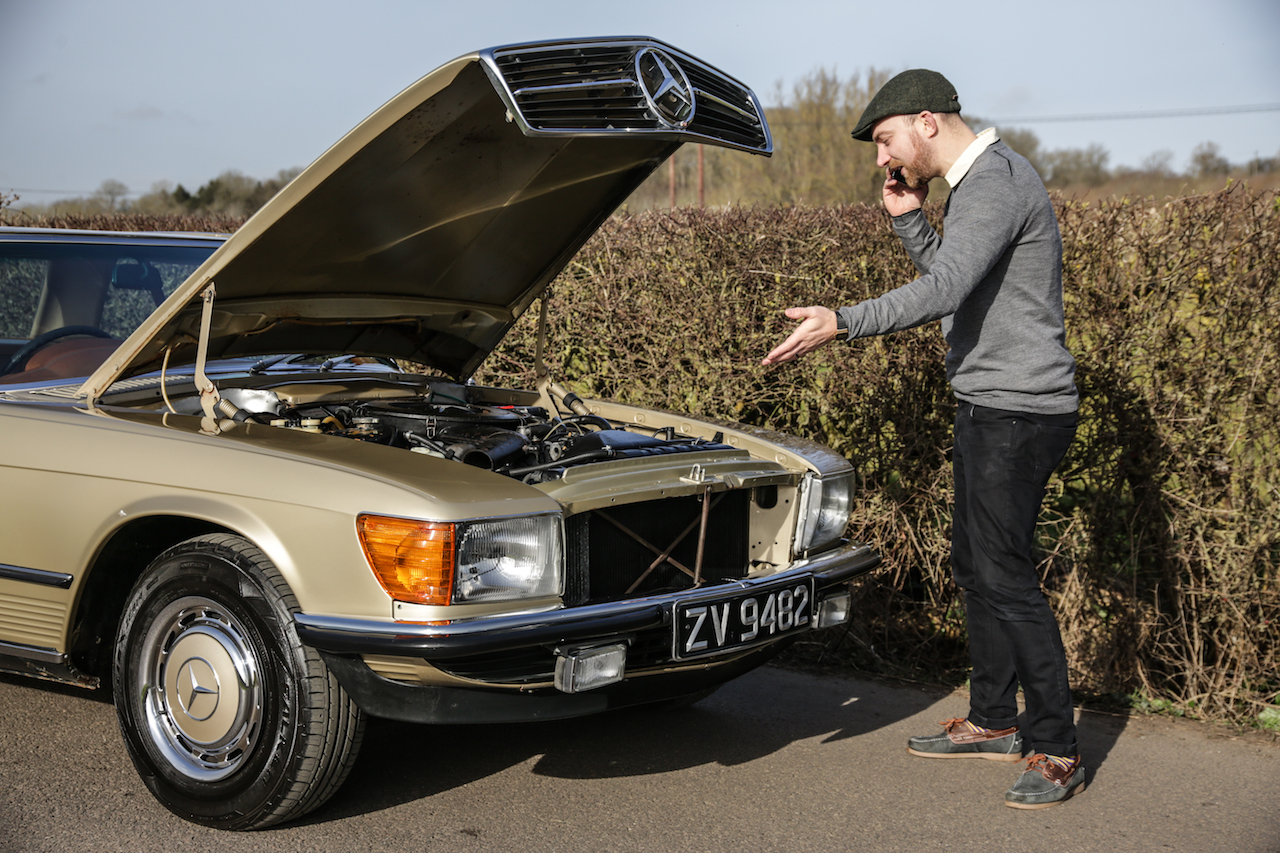
Joe at the SLSHOP tries to uncover a problem with his mechanicals at the roadside.
What is the aim of E10 fuel?
The Government’s aim to reduce emissions by 78% by 2035 (compared to 1990) is now enshrined in law, setting the steps for a Net Zero target by 2050. The introduction of E10 will supposedly reduce Co2 emissions by 750,000 tonnes per year, which is the equivalent of removing 350,000 cars from UK roads.
Can I use E10 in old cars?
Older cars may not respond well to the increased presence of bioethanol in the running fuel, due to the way Ethanol absorbs water from the atmosphere. The absorbed water can find its way into your car, leading to condensation in fuel tanks, fuel lines and carburettors. This in turn can lead to corrosion in brass, copper, lead, tin, and zinc components.
Ethanol is also solvent, meaning that it can destroy rubber, plastic and fibreglass which will ultimately cause the lifeline of seals and hoses to reduce significantly. More E10 means potentially more fragile components in your older car. The Department for Transport has concluded that degradation to fuel hoses and seals, blocked fuel filters, damaged fuel pumps, corroded carbs, blocked injectors, and corrosion in fuel tanks all resulted from E10 being used in older cars.
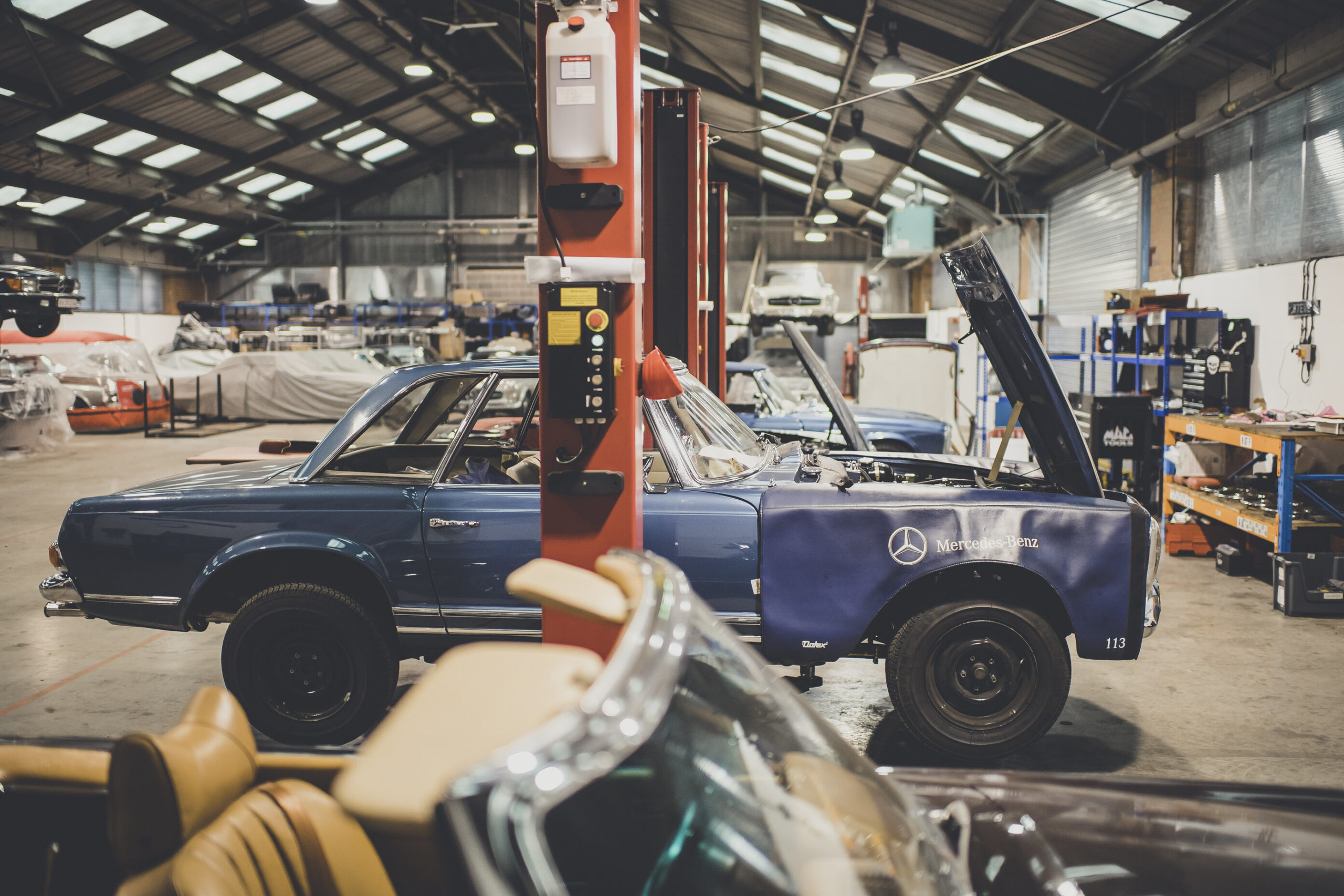
Our Heritage workshop where we inspect, restore and modify vehicles. All parts used take into account the introduction of E10 fuel.
Will E10 be more economical for my vehicle?
E10 is less dense than E5 Petrol due to the increased presence of Ethanol, meaning that the lower fuel-air mix will cause higher consumption. Autocar has also tested the real-world application of E10 from an economy perspective, finding that it increases fuel consumption by 10%. Governments in the UK and abroad claim that the increase in consumption is offset by the renewable properties of the Ethanol component of the E10 variant.
How do you know if your car is compatible?
Compatibility is not guaranteed regardless of the car, but post-2011 vehicles have been produced with the E10 fuel variant as a running source. Those with older vehicles and specifically classic cars or modern classics, should head to the Government’s website where you can check E10’s compatibility with older vehicles.
Fear not, E5 is set to stay
Despite this introduction of E10, the E5 standard will remain for 5 years from Autumn 2021. It is also reported that E5 only contains 2-3% ethanol anyway. You can expect E5 to remain more expensive and potentially increase in price as well, with the current difference being roughly 15 pence more per litre. A thirsty V8 could well cost you over £10 more to fill up over the coming 5 years. So, avoiding using E10 fuel in older cars is easier for those with larger purses…
How can you protect your older vehicle from E10?
The ideal solution to prepare for the phasing out of E5 and common presence of E10, would be to change the components of your classic or modern classic vehicle that are most sensitive to ethanol. As already mentioned, seals, fuel hoses, injectors and fibreglass components should all be a consideration. However, this isn’t a guaranteed fix, as unfortunately any alternative replacement parts available are going to be made from materials that E10 will likely have an impact on. Find out more here.
We advise that you don’t leave your classic sat for long durations of time with E10 in the fuel tank. This can cause the fuel tank to rot; particularly if the tank is made of fibreglass. We also suggest that those with soldered fuel tanks or carburettor floats, replace them immediately or avoid using E10 for as long as possible. The higher concentration of Ethanol in E10 will eat through the solder extremely quickly and could cause a vast amount of damage.
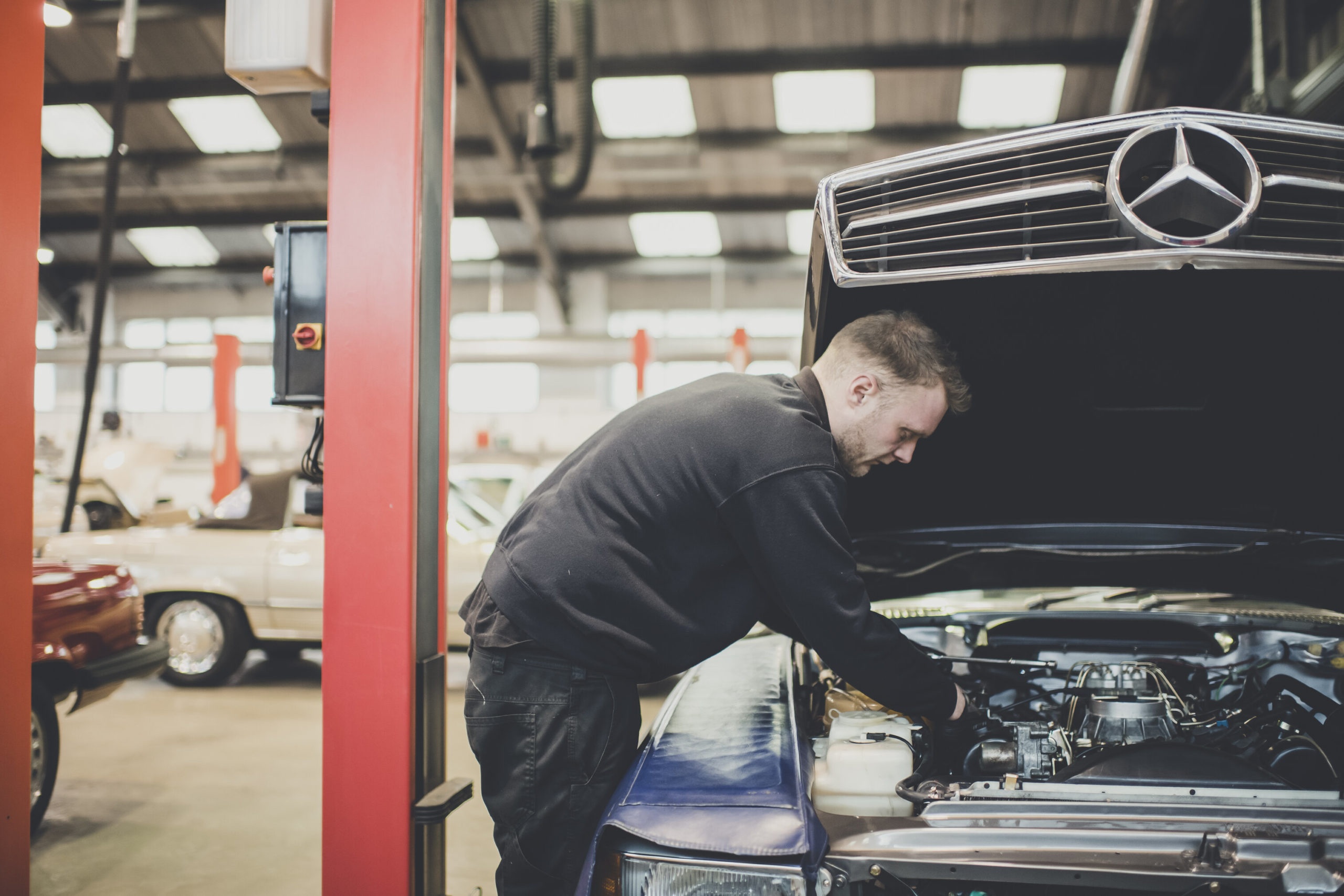
How is SLSHOP preparing for the introduction of E10 fuel in older Mercedes models?
SLSHOP aims to replace parts with the most robust alternative available, taking into consideration the implementation of E10 fuel. Whilst these parts are less susceptible to the corrosive traits of E10, we cannot guarantee that they will not be affected over the long term. Fortunately, fuel tanks found in the W113, R107 and R129 SLs are metal and are not affected by E10 in the way that Fibreglass tanks are.
Dan from our Heritage Workshop has assessed the impact on Carburettor models, such as the 190SL (W121), which was manufactured with stock Solex carburettors and possessed a float to control the amount of fuel flowing into the engine. Dan confirmed that we replace the Stock Solex carburettors with the more advanced Weber system on all non-fuel injection SL models. The Weber Carburettors involve a different brass float mechanism and are not as susceptible to the corrosive composition of E10.
Our Parts Store stocks Lead replacement additives to help protect your classic’s internal organs from the higher proportion of bioethanol in E10:
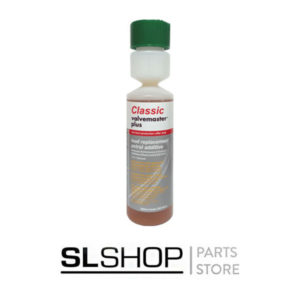
This formula uses Octimise-Plus to enhance the performance and economy of your classic, while also stabilising both E5 and E10 petrol variants. Valvemaster Plus also contains Etha-Guard ethanol stabiliser which prevents acidity and protects your engine components from corrosion, keeping the fuel system clean at the same time. This product is particularly effective for cars in storage and is suitable for Carburettor and Injection setups.
If you have any particular concerns about your using E10 in your older Mercedes-Benz and want to speak to an expert about preventative maintenance, please email [email protected].
Share With Your Fellow Enthusiasts
A new grade of fuel, known as E10 will be introduced to UK motorists in September 2021. E10 fuel in old cars could have significant effects on performance and condition, eventually contributing to more excessive wear and tear.
Experts are concerned that the introduction of E10 could be more detrimental to the motor vehicle, than the transition from leaded to unleaded Petrol at the start of the millennium. The introduction of E10 is just one of the Government’s forthcoming steps to achieving Net Zero, with this more climate-conscious Petrol variant intending to help drivers more easily transition to electric vehicles.
Initial research has suggested that pre-2011 cars will be most affected. But the RAC has specifically warned about the consequences of putting E10 in older pre-2002 cars, instructing people to avoid E10 fuel and outlining that over 600,000 drivers will be affected by the introduction of this fuel. The impact to these customers could extend beyond expensive maintenance to an inevitable increase in the price of traditional unleaded fuel. The Society of Motor Manufacturers and Traders has also estimated that 8% of petrol-engine vehicles in the UK are not compatible with E10.
What is E10 fuel?
The unleaded fuel we use at present contains 5% bioethanol and hence the name E5 printed on the fuelling guns you find at forecourts. This label will be changed to E10 from September, reflecting the increase in bio-ethanol presence to 10%. On one side, the increased presence of bioethanol makes the fuel marginally more environmentally friendly, but on the other hand, it is not as compatible with older vehicles.

Joe at the SLSHOP tries to uncover a problem with his mechanicals at the roadside.
What is the aim of E10 fuel?
The Government’s aim to reduce emissions by 78% by 2035 (compared to 1990) is now enshrined in law, setting the steps for a Net Zero target by 2050. The introduction of E10 will supposedly reduce Co2 emissions by 750,000 tonnes per year, which is the equivalent of removing 350,000 cars from UK roads.
Can I use E10 in old cars?
Older cars may not respond well to the increased presence of bioethanol in the running fuel, due to the way Ethanol absorbs water from the atmosphere. The absorbed water can find its way into your car, leading to condensation in fuel tanks, fuel lines and carburettors. This in turn can lead to corrosion in brass, copper, lead, tin, and zinc components.
Ethanol is also solvent, meaning that it can destroy rubber, plastic and fibreglass which will ultimately cause the lifeline of seals and hoses to reduce significantly. More E10 means potentially more fragile components in your older car. The Department for Transport has concluded that degradation to fuel hoses and seals, blocked fuel filters, damaged fuel pumps, corroded carbs, blocked injectors, and corrosion in fuel tanks all resulted from E10 being used in older cars.

Our Heritage workshop where we inspect, restore and modify vehicles. All parts used take into account the introduction of E10 fuel.
Will E10 be more economical for my vehicle?
E10 is less dense than E5 Petrol due to the increased presence of Ethanol, meaning that the lower fuel-air mix will cause higher consumption. Autocar has also tested the real-world application of E10 from an economy perspective, finding that it increases fuel consumption by 10%. Governments in the UK and abroad claim that the increase in consumption is offset by the renewable properties of the Ethanol component of the E10 variant.
How do you know if your car is compatible?
Compatibility is not guaranteed regardless of the car, but post-2011 vehicles have been produced with the E10 fuel variant as a running source. Those with older vehicles and specifically classic cars or modern classics, should head to the Government’s website where you can check E10’s compatibility with older vehicles.
Fear not, E5 is set to stay
Despite this introduction of E10, the E5 standard will remain for 5 years from Autumn 2021. It is also reported that E5 only contains 2-3% ethanol anyway. You can expect E5 to remain more expensive and potentially increase in price as well, with the current difference being roughly 15 pence more per litre. A thirsty V8 could well cost you over £10 more to fill up over the coming 5 years. So, avoiding using E10 fuel in older cars is easier for those with larger purses…
How can you protect your older vehicle from E10?
The ideal solution to prepare for the phasing out of E5 and common presence of E10, would be to change the components of your classic or modern classic vehicle that are most sensitive to ethanol. As already mentioned, seals, fuel hoses, injectors and fibreglass components should all be a consideration. However, this isn’t a guaranteed fix, as unfortunately any alternative replacement parts available are going to be made from materials that E10 will likely have an impact on. Find out more here.
We advise that you don’t leave your classic sat for long durations of time with E10 in the fuel tank. This can cause the fuel tank to rot; particularly if the tank is made of fibreglass. We also suggest that those with soldered fuel tanks or carburettor floats, replace them immediately or avoid using E10 for as long as possible. The higher concentration of Ethanol in E10 will eat through the solder extremely quickly and could cause a vast amount of damage.

How is SLSHOP preparing for the introduction of E10 fuel in older Mercedes models?
SLSHOP aims to replace parts with the most robust alternative available, taking into consideration the implementation of E10 fuel. Whilst these parts are less susceptible to the corrosive traits of E10, we cannot guarantee that they will not be affected over the long term. Fortunately, fuel tanks found in the W113, R107 and R129 SLs are metal and are not affected by E10 in the way that Fibreglass tanks are.
Dan from our Heritage Workshop has assessed the impact on Carburettor models, such as the 190SL (W121), which was manufactured with stock Solex carburettors and possessed a float to control the amount of fuel flowing into the engine. Dan confirmed that we replace the Stock Solex carburettors with the more advanced Weber system on all non-fuel injection SL models. The Weber Carburettors involve a different brass float mechanism and are not as susceptible to the corrosive composition of E10.
Our Parts Store stocks Lead replacement additives to help protect your classic’s internal organs from the higher proportion of bioethanol in E10:

This formula uses Octimise-Plus to enhance the performance and economy of your classic, while also stabilising both E5 and E10 petrol variants. Valvemaster Plus also contains Etha-Guard ethanol stabiliser which prevents acidity and protects your engine components from corrosion, keeping the fuel system clean at the same time. This product is particularly effective for cars in storage and is suitable for Carburettor and Injection setups.
If you have any particular concerns about your using E10 in your older Mercedes-Benz and want to speak to an expert about preventative maintenance, please email [email protected].
Share With Your Fellow Enthusiasts
More from Journal
CARE
THE ULTIMATE CERTIFIED SERVICING INVESTMENT PLAN
Your ownership journey matters to us, which is why we have created a simple certified servicing investment plan, tailored to your individual needs and aspirations.
Start investing today and our dedicated CARE team will work with you to increase the value and enjoyment you receive from your vehicle.

STAY IN TUNE WITH SLSHOP MOMENTS
As part of SLSHOP’s community of enthusiasts, you’ll be the first to hear about events and tours, key product offers, exciting stories from owners around the world and of course… our latest additions to the showroom. So, be the first to know and you might just sneak a car on your driveway or take your car’s condition to new heights with our exclusive replacement parts.
Or, visit SLSHOP Journal
